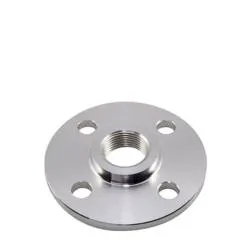-
Cangzhou Yulong Steel Co., Ltd.
-
Phone:
+86 13303177267 -
Email:
admin@ylsteelfittings.com

Aug . 10, 2024 15:55 Back to list
Exploring High-Quality Cast Pump Components for Enhanced Performance and Reliability in Various Applications
Understanding Cast Pump Parts An Essential Component in Fluid Dynamics
In the world of engineering and fluid dynamics, pumps play a critical role in moving liquids from one place to another. At the heart of these pumps lie cast pump parts, which are fundamental to their operation, efficiency, and durability. Understanding these components is essential for anyone involved in the design, maintenance, and operation of pumping systems.
What are Cast Pump Parts?
Cast pump parts are components manufactured through a casting process, where molten metal is poured into a mold and allowed to solidify. This method of production allows for intricate designs and shapes that are essential for the effective functioning of pumps. Common materials used for casting include iron, aluminum, and various alloys, each selected based on its properties and the specific requirements of the pump application.
Key Components of Cast Pump Parts
1. Pump Housing The pump housing is the outer shell that encloses the internal components. Made typically from cast iron or aluminum, it must withstand the pressure of the fluid being pumped and protect against environmental factors. The design of the housing is crucial, as it affects the overall efficiency and noise levels of the pump.
2. Impellers The impeller is a rotating component that transfers energy to the fluid, causing it to move. Cast impellers are designed with specific shapes and blade angles to optimize fluid flow and pump performance. The choice of material is vital; for example, corrosion-resistant materials are preferred in applications involving aggressive fluids.
3. Volutes A volute is a spiral-shaped casing that helps direct the flow of fluid from the impeller to the discharge outlet. The volute’s design plays a significant role in improving the efficiency of energy transfer within the pump, as it minimizes turbulence and maximizes fluid velocity.
4. Covers Pump covers, which can also be cast parts, serve to seal the pump and maintain the internal pressure. They are designed to allow for easy access to internal components during maintenance while ensuring structural integrity under operational conditions.
cast pump parts

Advantages of Using Cast Pump Parts
The use of cast parts in pump manufacturing offers several advantages. Firstly, the casting process allows for cost-effective production of complex shapes that would be difficult or impossible to achieve through machining alone. Secondly, cast materials often have excellent durability and corrosion resistance, making them suitable for a variety of applications, including water treatment, chemical processing, and oil pipelines.
Moreover, the ability to create larger and heavier components through casting means that pumps can be designed for higher flow rates and pressures without compromising performance. Cast iron, for instance, is known for its excellent wear resistance and has been a staple in pump manufacturing for years.
Challenges and Considerations
While cast pump parts have numerous advantages, there are challenges involved. The quality of the casting process is crucial; defects such as porosity or inclusions can compromise the strength and performance of the parts. Additionally, the weight of cast components can be a consideration in some applications, necessitating careful handling and installation procedures.
Regular maintenance and inspection of cast pump parts are essential to ensure their longevity. Wear and tear can occur over time, and any degradation can lead to decreased efficiency or failure, causing costly downtime.
Conclusion
Cast pump parts are indispensable in the functioning of pumps across various industries. Their design, material selection, and manufacturing process significantly impact a pump's performance and reliability. By understanding the role and significance of these components, engineers and operators can make informed decisions that enhance system efficiency and longevity. As technology continues to advance, innovations in casting techniques and materials will likely further improve the effectiveness of cast pump parts, ensuring their relevance in modern fluid dynamics applications.
Latest news
-
ANSI 150P SS304 SO FLANGE
NewsFeb.14,2025
-
ASTM A333GR6 STEEL PIPE
NewsJan.20,2025
-
ANSI B16.5 WELDING NECK FLANGE
NewsJan.15,2026
-
ANSI B16.5 SLIP-ON FLANGE
NewsApr.19,2024
-
DIN86044 PLATE FLANGE
NewsApr.19,2024
-
DIN2527 BLIND FLANGE
NewsApr.12,2024
-
JIS B2311 Butt-Welding Fittings LR/SR 45°/90° /180°Seamless/Weld
NewsApr.23,2024
-
DIN2605-2617 Butt-Welding Fittings LR/SR 45°/90°/180° Seamless/Weld
NewsApr.23,2024











